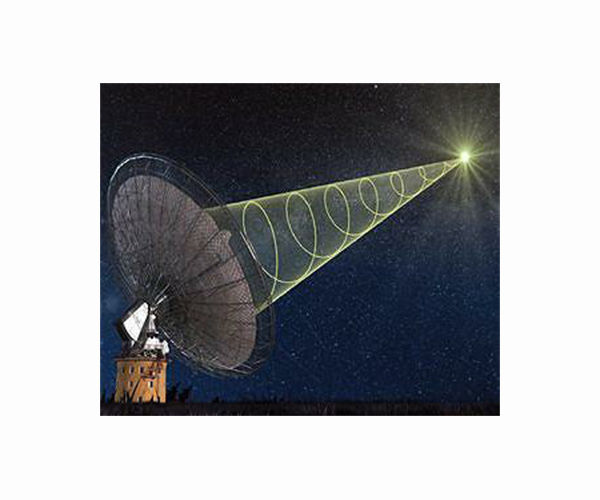
For the first time in history, researchers say they picked up a radio signal from a single source in outer space that repeated at certain intervals for more than a year -- and in this case, the pattern came and went roughly every two weeks.
Collaborators from the Canadian Hydrogen Intensity Mapping Experiment and FastRadio Burst Project said this particular signal began every 16.35 days from Sept. 16, 2018, to Oct. 30, 2019 -- and its origin was a galaxy 500 million light-years away.
Scientists said after it arrived, the signal was detected once per hour for four days before it would go silent -- and return 12 days later. The signal was picked up by a radio telescope designed by a group of Canadian scientists.
The new findings are detailed by researchers in a 27-page report that specifies a number of fast radio bursts, or FRBs, they detected.
Fast radio bursts are hard to pinpoint because they last for only a few milliseconds.
Some researchers suggest the repeating signals were caused by a source orbiting around a star, perhaps explaining why they would stop for a precise period of time. Another theory is that stellar winds could either block or enhance the signal from a body behind them.
While the signals might tempt some to speculate they came from extraterrestrials, some experts doubt it.
"The signals are a sign of energetic events that are on the extreme scale of the cosmos," researcher Neel V. Patel wrote for MIT Technology Review. "Even a highly intelligent species would be very unlikely to produce energies like this.
"And there is no detectable pattern so far that would suggest there's a sentient hand at play."
The Canadian research has not yet been peer-reviewed.
Source : Space Daily